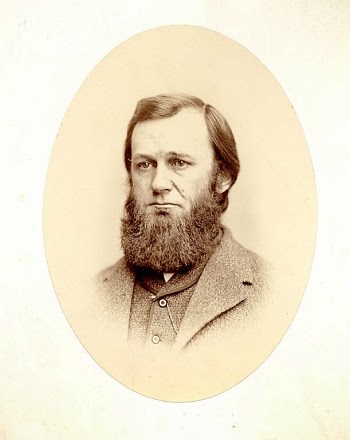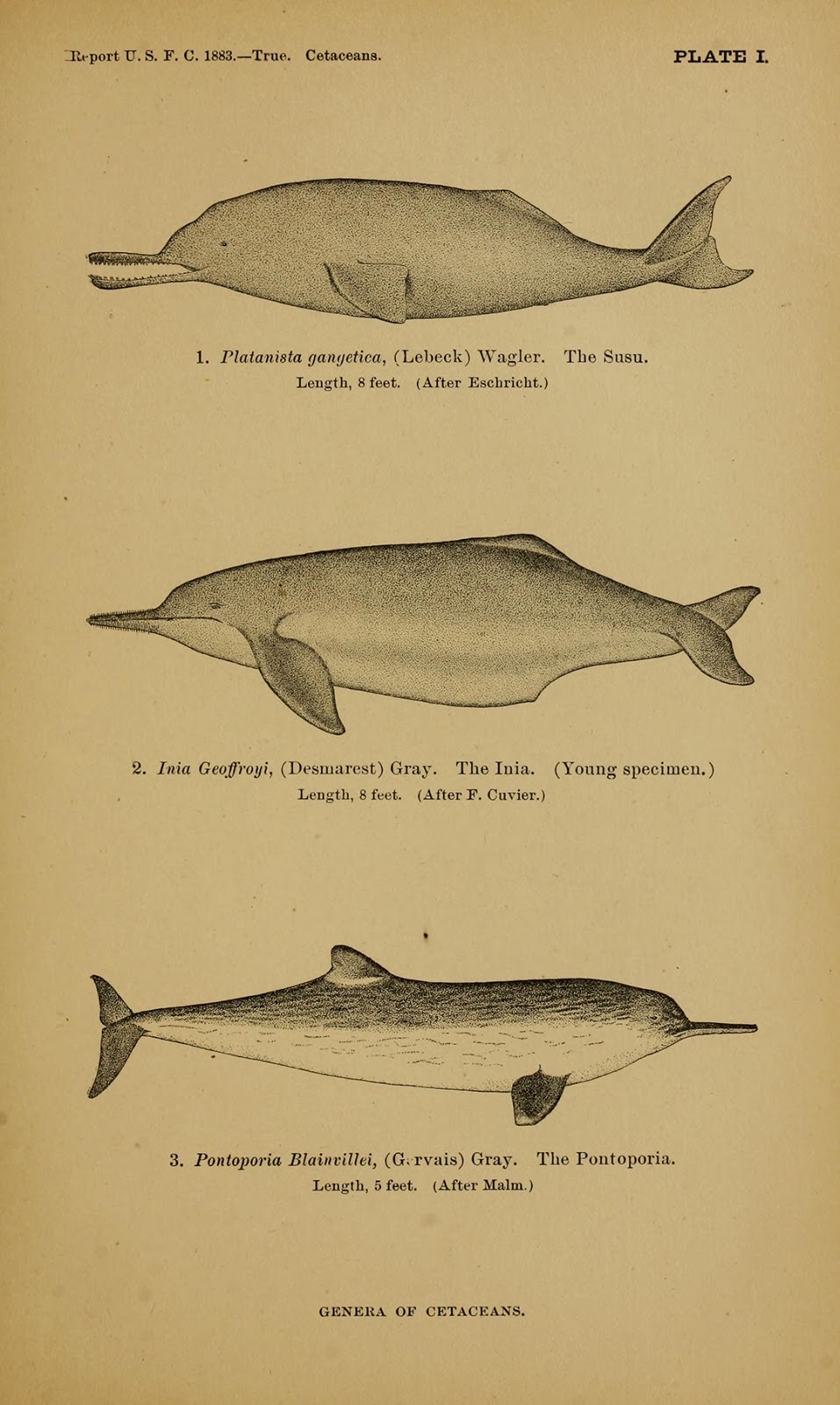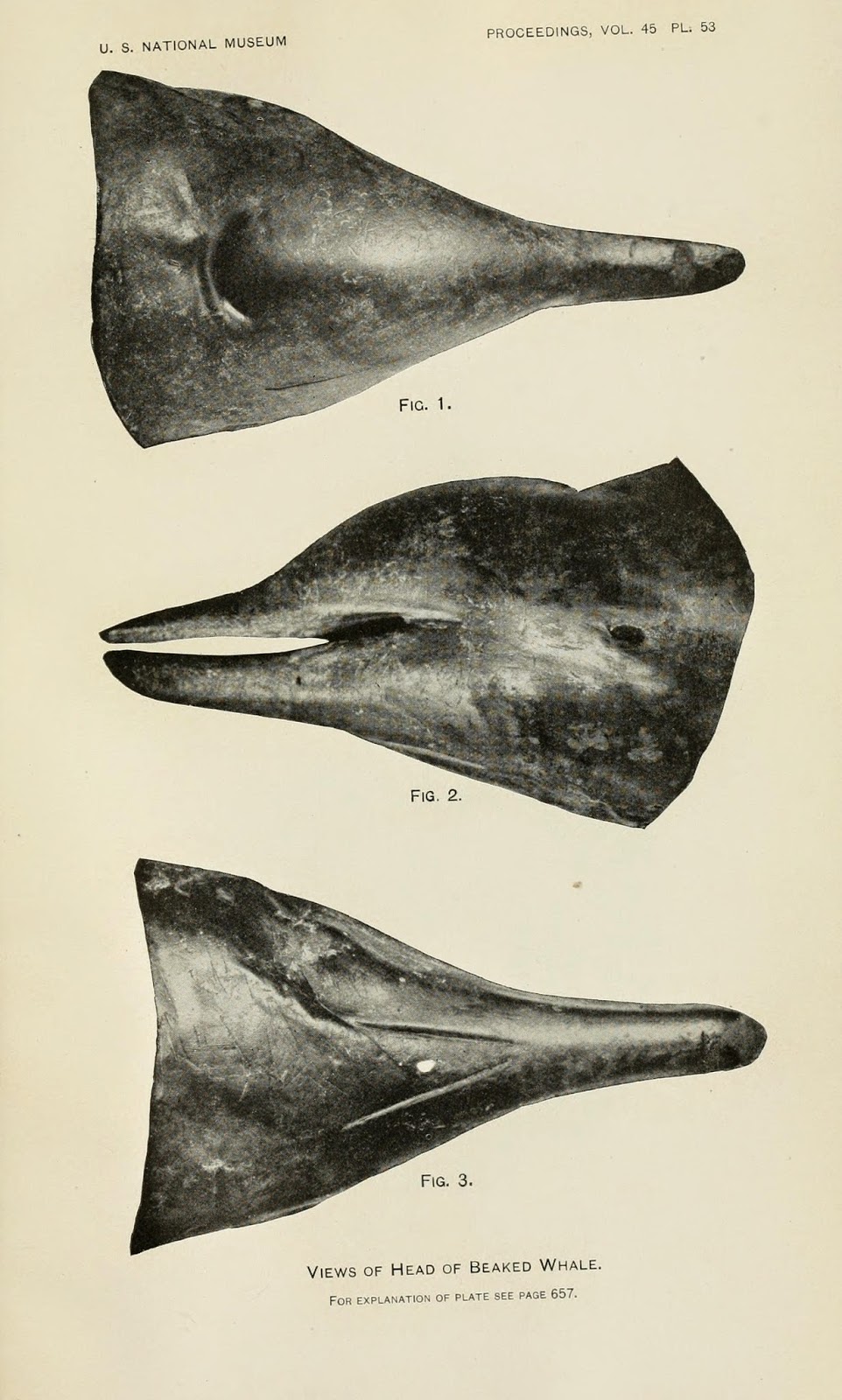True Detective: Frederick W. True’s lifelong dedication to uncovering the natural history of marine mammals
The Smithsonian Field Book Project is showcasing Frederick William True in February! This post is follows in a series of blogs and social media content from the Biodiversity Heritage Library, Pyenson Lab, Smithsonian Transcription Center, Smithsonian Archives, and Smithsonian Libraries celebrating #FWTrueLove. Click on these links to the first and second posts; the third one, below, is based on a seminar recently presented by John Ososky (OsteoPrep Lab, Department of Vertebrate Zoology, NMNH) and co-written with N. D. Pyenson.
 |
| Frederick William True. c. 1880s. Smithsonian Institution Archive. Negative Number 2002-32245. http://siarchives.si.edu/collections/siris_sic_10688. |
In 1858, the inland port of Middletown, Connecticut, was the largest manufacturer of marine hardware in the United States, at a time when the shipping industry shifted from sails to steam. Frederick W. True was born that year, and unsurprisingly developed a lifelong interest in ships and fisheries, especially as he witnessed the decline of the Yankee whaling industry. After earning a Bachelor of Science degree in 1878, he took a job as clerk with the U.S. Fish Commission, which at the time was headed by the Smithsonian’s second Secretary, Spencer Fullerton Baird.
 |
| Spencer Fullerton Baird. Smithsonian Archives – History Div, 46853/oval or 2004-60740. http://siarchives.si.edu/history/spencer-fullerton-baird. |
While Secretary of the Smithsonian, Baird also decided to serve as the first Commissioner of the U.S. Fish Commission (a precursor to NOAA’s National Marine Fisheries Service). Under Baird’s guidance, the Commission became a robust scientific enterprise, undertaking extensive surveys of fisheries along all U.S. coastlines, censuses of fishery laborers, and also collecting data on target species and fisheries infrastructure. Baird was strategic about his influence, and he used the expansion of the Commission as an opportunity to hire promising young naturalists — such as True — and get their foot in the door at the Smithsonian.
Recruited by Baird, True was initially a special agent for the U.S. Fish Commission, but eventually Baird put him in charge of the joint Smithsonian-U.S. Fish Commission display at the Berlin Fisheries Exhibition of 1880, where many of the specimens collected by special agents for the Commission were put on display. At the time, the Smithsonian lacked an official library (for various historical reasons), and Baird rectified this situation in 1881 by donating his own personal library to form the core of a new research library at the Smithsonian. Baird recognized True’s diligence and acumen as a reseacher, and hired him to lead it. True seized on the opportunity, and improved on the idea immediately, forming divisional libraries to meet the specialized needs of individual curators, which still continue to this day (such as the Kellogg Library of marine mammalogy, named in honor of Remington Kellogg, who never met True but succeeded him as a Smithsonian marine mammalogist).
 |
| Remington Kellogg. Smithsonian Institution Archives. Image Number 78-3701. http://siarchives.si.edu/collections/siris_sic_11289. |
True sometimes diverged from his role as a librarian to fill a void as acting curator of mammals; Baird, who noted True’s ambition and drive, soon appointed him curator of mammals in 1883. While microscopic descriptions were the rage in natural history at the time, True’s poor eyesight made this type of work difficult. True instead recognized the wealth of marine mammals specimens at the Smithsonian that had been generated in part by Baird’s collections from the Commission, as well as collections made by Captain Charles M. Scammon in the North Pacific Ocean in the 1870s and the prolific Edward Drinker Cope, who had been hired by Baird to write a monograph on cetaceans, which only came to partial fruition. Thus, True had the opportunity and motivation to expand his interest in marine fisheries and take on the study of cetaceans.
At the same time, True recognized the need to expand and grow the collections for the U.S. National Museum (USNM, the forerunner of what today is called the National Museum of Natural History, or NMNH). In a shrewd and practical move, True encouraged keepers of lighthouses and life-saving stations along the U.S. coasts to collect stranded specimens and data on marine mammals. True’s 1884 guide on the topic effectively presaged the logic of the modern marine mammal stranding network, which only formally took effect with the U.S. Marine Mammal Act of 1972.
 |
| Suggestions to the keepers of the U.S. life-saving stations, light-houses, and light-ships; and to other observers, relative to the best means of collecting and preserving specimens of whales and porpoises. True, F.W. (1884). http://biodiversitylibrary.org/page/16177227. |
True capitalized on Baird’s support by expanding collecting efforts, both opportunistically as part of industries and fisheries, and with more dedicated expeditions with specific curators at USNM. For example, the Smithsonian’s involvement with the Western Union Telegraph Expedition to Alaska in 1865 brought William H. Dall, a paleontologist who later would work for both the U.S. Geological Survey and the Smithsonian, into the collaborative fold. As a tribute to Dall’s impact, True named Dall’s porpoise, Phocaena dalli (now Phocoenoides dalli) in 1885 based on a description, drawings and specimen collected by Dall in Alaska. Unfortunately, this specimen was initially shipped to the Army Medical Museum by mistake, where rats chewed up the postcranial elements. (The skull is now all that is now left of the holotype specimen).
 |
| Dall’s porpoise (Phocoenoides dalli). Proceedings of the United States National Museum. v. 8 (1885). http://biodiversitylibrary.org/page/15383677. |
In 1895, the U.S. Fish Commission called True back into service for a study on the Northern fur seal industry in the Pribilof Islands, off Alaska. The Commission, lacking confidence in the local Russian naturalist’s conclusion about sustainable yield of fur seal skins from the islands’ rookeries, launched their own investigations. True, as he would in other field expeditions, brought along his father-in-law, D. W. Prentiss, as well as one of his chief preparators, William H. Palmer, who collected specimens while there. (Palmer would also later collect Miocene fossil marine mammals for True in Calvert County, Maryland). En route to the Pribilofs, the team dropped off another Smithsonian curator, Leonhard Stejneger, at the Commander Islands, near the Kamchatka Peninsula of modern-day Russia. Stejneger, who slightly preceded True, collected many marine mammals as well, including a beaked whale specimen that True named for him, Mesoplodon stejnegeri. True’s report on their work at the Pribilofs offered novel conservation strategies for the population, although he viewed a ban on pelagic sealing as the only effective strategy.
In 1899, True travelled to Newfoundland where a shore based whaling operation had been started by the Cabot Whaling Company at Snooks Arm in Notre Dame Bay. True joined the crew on the steam powered ships as they harpooned and returned to the station fin whales, as well as a smaller number of humpbacks. True observed and photographed the whaling operation, but also participated in crew activities, even including manning the harpoon on a successful fin whale hunt. As whales were flensed and processed, True availed himself of an opportunity to study the whale’s anatomy, especially at a second station that was opened at Balaena Station in Hermitage Bay, Newfoundland, in 1901. There, the primary target species were blue whales, which were too fast and too large for earlier fisheries to tackle. This operation offered an exciting new opportunity to study them, and generated important collections for the USNM, including a full plaster cast of one individual for the St. Louis Exposition of 1903.
 |
| Remington Kellogg and Leonhard Stejneger with the 1903 blue, or sulphur-bottom, whale, on exhibit in the Natural History Museum, c. 1930s. Image from Smithsonian Institution Archives. |
True’s ultimate contributions to marine mammal science were three profound monographs on Cetaceans. Grace Costantino provided a nice summary of his 1899 monograph on oceanic dolphins (A Review of the Family Delphinidae) at BHL’s blog last week. True’s lengthy Whalebone Whales of the Western North Atlantic in 1904 marked the first affirmative answer to whether baleen whales on opposite sides of the Atlantic constituted the same species and populations. To arrive at that conclusion, True provided the first extensive review of the validity of earlier descriptions of American whales by Scammon and Cope, an effort which relied on his own travels to other museum collections, and the rapidly growing one at his home institution (USNM). His 1910 work on beaked whales (An Account of the Beaked Whales of the Family Ziphiidae) similarly cleared up a mess of older taxonomic names for this enigmatic group of toothed whales, which have been a special strength of the Smithsonian since the time of Baird. In the past 100 years, many beaked whale species have been named after Smithsonian curators and other research associates, including: Baird’s beaked whale (Berardius bairdii), Stejneger’s beaked whale (Mesoplodon stejnegeri), True’s beaked whale (Mesoplodon mirus) and Perrin’s beaked whale (Mesoplodon perrini by emeritus curator of marine mammals James G. Mead). For his own contributions, True’s name is bestowed on the common names of two rodent species that he described and published on from Asia.
 |
| Head of True’s Beaked Whale (Mesoplodon mirus). Proceedings of the United States National Museum. v. 45 (1913). http://biodiversitylibrary.org/page/7307255. |
In True’s entry for the Dictionary of American Biography, Alexander Wetmore (an ornithologist, Smithsonian curator, and the sixth Secretary of the Smithsonian) reflected that True was “profound as a student, and exact and punctilious as an administrative officer,” traits that no doubt served him well in his major capacities at USNM. By 1897, True was appointed head curator of the Department of Biology, with broad administrative direction over all biological work at USNM, and served as acting secretary of the entire institution for a short period of time that year. When the natural history collections of USNM moved across the National Mall to the newly built natural history building in 1910 (today, the main museum for NMNH), True became assistant secretary of the Smithsonian in charge of the library and of the international exchange service, a position that he occupied until his death in 1914.





Leave a Comment